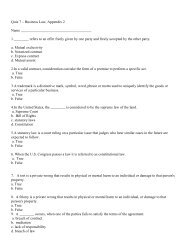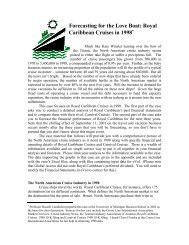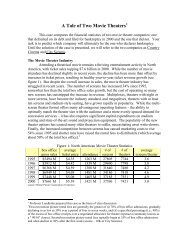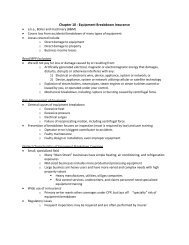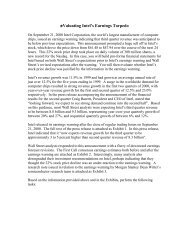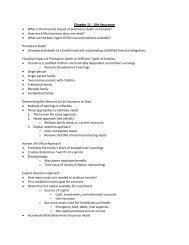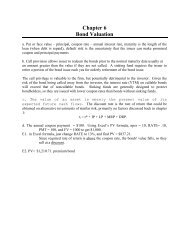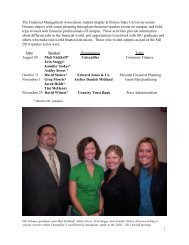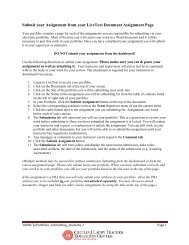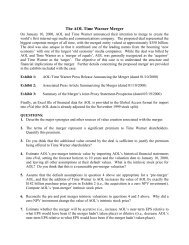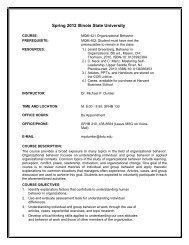Evaluating a Firm's External Environment - Illinois State University
Evaluating a Firm's External Environment - Illinois State University
Evaluating a Firm's External Environment - Illinois State University
Create successful ePaper yourself
Turn your PDF publications into a flip-book with our unique Google optimized e-Paper software.
M02_BARN4586_03_SE_C02.qxd 7/1/09 7:34 AM Page 35<br />
Chapter 2: <strong>Evaluating</strong> a Firm’s <strong>External</strong> <strong>Environment</strong> 35<br />
Industry structure<br />
Figure 2.2 The Structure-<br />
Conduct-Performance Model<br />
Number of competing firms<br />
Homogeneity of products<br />
Cost of entry and exit<br />
Firm conduct<br />
Strategies firms pursue to gain<br />
competitive advantage<br />
Performance<br />
Firm level: competitive disadvantage, parity,<br />
temporary or sustained competitive advantage<br />
Society: productive and allocative efficiency,<br />
level of employment, progress<br />
relationship between these two types of performance can sometimes be complex,<br />
as described in the Ethics and Strategy feature.<br />
The logic that links industry structure to conduct and performance is well<br />
known. Attributes of the industry structure within which a firm operates define<br />
the range of options and constraints facing a firm. In some industries, firms have<br />
very few options and face many constraints. In general, firms in these industries<br />
can only gain competitive parity. In this setting, industry structure completely<br />
determines both firm conduct and long-run firm performance.<br />
However, in other, less competitive industries, firms face fewer constraints<br />
and a greater range of conduct options. Some of these options may enable them to<br />
obtain competitive advantages. However, even when firms have more conduct<br />
options, industry structure still constrains the range of options. Moreover, as will<br />
be shown in more detail later in this chapter, industry structure also has an impact<br />
on how long firms can expect to maintain their competitive advantages in the face<br />
of increased competition.<br />
The Five Forces Model of <strong>Environment</strong>al Threats<br />
As a theoretical framework, the S-C-P model has proven to be very useful in<br />
informing both research and government policy. However, the model can sometimes<br />
be awkward to use to identify threats in a firm’s local environment.<br />
Fortunately, several scholars have developed models of environmental threats<br />
based on the S-C-P model that are highly applicable in identifying threats facing a<br />
particular firm. The most influential of these models was developed by Professor<br />
Michael Porter and is known as the “five forces framework.” 12 The five forces<br />
framework identifies the five most common threats faced by firms in their local<br />
competitive environments and the conditions under which these threats are more



